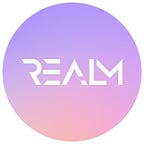Hi everyone and welcome to Devlog #108!
First, an overview on the status of the releases showcased in Devlog #107: This week we’ve run into a few delays with the latest deployment of the app due to some changed guidelines on the app stores (particularly the Apple store — no surprises there). This means that the builder tool features are also not releasable yet since we need app and builder releases to synchronise when major new features are added.
We apologise for the effect of these app store changes on the update deployment — we know there are builders who cant wait to get going with custom courses but you will just have to wait a little bit longer whilst we get these latest builds submitted and approved. We will be further discussing this on the next AMA, so be sure to tune in!
Now, lets check out some of the hardcore work we’ve been undertaking on implementing the crescents for landholders, and on the rules and means by which holders can customise their parcel:
The Crescent Inside Realm
The First Pass
Today, you get to see the Crescent land parcels within Godot for the first time. Up until now we have been working on the Crescent asteroid ring (see Devlog #103 for the insane anti-grav in the crescent ring), and on creating the land parcels themselves in Blender. This is the the first pass in-engine with of all essential meshes with base textures and the surrounding environment. Notably, all 16 crescent land parcels have been strategically distributed throughout the space, providing portal connection points for your favourite builder realm. This means that each of the core clusters is now an explorable entity within the platform — a major development on the road to deploying the Crescent ring.
Additionally, as a land owner you will have the option to link a custom GLB 3D model directly to your parcel, allowing you to showcase a model of your choice — an excellent opportunity to advertise your realm or display a digital art piece within a 20x20x20m bouncing volume. We’re eager to see the diverse choices players will make in shaping the Crescents!
Check it out here:
The subsequent phase involves refining the model by removing or concealed mesh faces and baking ambient occlusion maps for the entire structure, thereby adding depth and three-dimensionality. In the final iterations, we plan to embellish the base geometry with more ornamentation derived from high-poly meshes, along with soft assets such as plants and fabrics, breathing vibrant life into the Crescent. And, of course, you’ll encounter the familiar array of smart objects, including bounce pads and cleverly concealed loot hidden in various nooks and crannies.
While the transition from 3D modeling to the game engine presents its challenges, once that initial hurdle is crossed, progress unfolds rapidly. Soon enough, we’ll find ourselves exploring the asteroid field and the Crescent realm firsthand. The journey from conception to virtual reality is an exhilarating one, and the Crescent is poised to become a dynamic and immersive space shaped by the creativity of its inhabitants.
We can’t wait to explore the Crescent rings and all the unique land parcels with you all — stay tuned for further updates as we bring the Crescent lands to life.
Stay close for the latest. Join us 👇
Telegram Group | Telegram ANN | Twitter | Discord | Instagram | YouTube
About REALM
Leading mobile gaming platform with a purpose. Empowering players, creators & brands to participate in generating the future of entertainment in a co-owned virtual universe.
REALM players and creators are rewarded as they engage with the platform. The native REALM builder tool allows anyone, with no coding experience, to build personalised microverses, tell their story, and trade NTFs on the REALM Marketplace. Creators and brands can bring to life unique music, art, games, and anything else they can imagine into their realms.
